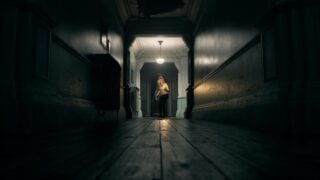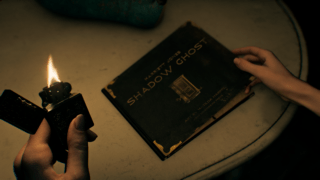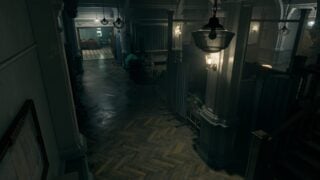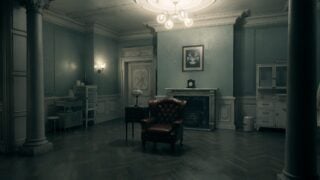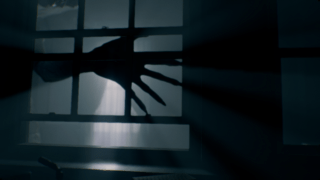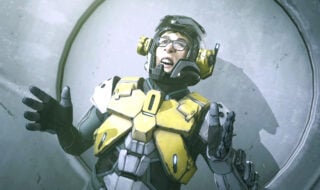Resident Evil Requiem feels an awful lot like Hideo Kojima’s cancelled P.T.
Hands-On: Resident Evil 9 offers an overly familiar brand of fear
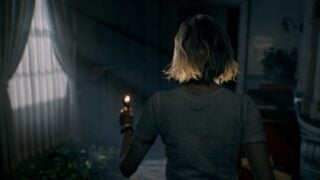
Has any demo in gaming history cast a wider shadow than P.T? The aptly named playable teaser was meant to be just that – a spooky proof of concept for an ambitious new type of Silent Hill – yet after Konami and Kojima’s irreparable spat, the Hideo horror project was unceremoniously cancelled.
Yet this new breed of horror didn’t stay dead for long. Despite never seeing a full release, this atmospheric first-person prototype changed video games forever, spawning a dearth of indie imitators and ushering in a new era of first-person frights.
Yet arguably, P.T’s eerie shadow loomed even larger over Resident Evil. After the maximalist mess of Resident Evil 6, Resident Evil 7 saw Capcom shift the series to first-person and double down on chase sequences and jump scares. As I play the demo for Resident Evil Requiem over a decade later, it’s hard not to feel a sense of deja vu, as it seems that Capcom has turned to P.T. for inspiration once again.
My demo begins with FBI technical analyst Grace Ashcroft awakening strapped upside down to a hospital bed, wounded and attached to an IV. Terrified, she struggles, breaking her restraints and thrashing her way free. Despite waking with zero dialogue and even less context, your objective is clear – get the hell out of here.
With Grace’s surroundings like an old US asylum, the building’s cavernous ceilings flicker with light across its dimly lit hallways. Finding a lighter, you roam around the dark without any musical accompaniment, just the echo of your footsteps for company as Grace shivers and breathes nervously.
As I explore the sickeningly silent floor, I soon discover an electric gate blocking my exit. I shake its iron bars, but to no avail. This is Resident Evil after all – and I’ll need to find a fuse to power it. All the while, heavy footsteps thud their way ominously across the creaking floorboards on the ceiling above me.
Doubling back down to the other end of the corridor, my lighter illuminates an unblocked door. Turning the handle, a white, clearly-infected corpse slumps its way out of the doorway. Yet before I can examine it, the body is suddenly devoured by a hulking humanoid monstrosity. Lurking out of the shadows, its talons drop its macabre meal and turns its gaze toward me, revealing a ceiling height female figure, neck craning as it hits the hospital’s 13-foot ceiling.
Sprinting out of the dimly-lit kitchen, I’m suddenly chased by the 12-foot creature – her flowing dark hair and animalistic features looking like a horrific mix of the girl from the ring and some equestrian. It turns out, I’m not quick enough – and she grabs me before devouring my head in an explosion of gore.
After meeting a grizzly fate for the fifth time, it finally dawns on me that there’s one thing that I can interact with in almost every room – a light switch. As I attempt to find the missing fuse box that will open the electric gate sealing the ward, the beast finds me once again.
Sprinting towards the nearest room with a working light, I cross the door frame just in the nick of time. As the monster lurches forward, swinging its claw, it shudders before stopping just out of reach of the light bulb, hissing in pain and slinking back into the darkness. It’s a clever trick, allowing you to survive without resorting to a gun – and one that feels all the more intuitive for the lack of handholding towards how to solve it.
“I’m suddenly chased by the 12-foot creature – her flowing dark hair and animalistic features looking like a horrific mix of the girl from the ring and some equestrian.”
Much has been made of the series’ pivot to first person, and while the demo specifically recommends playing Requiem in first-person, in a bid to appease its detractors, players are free to switch to this person via an option in the pause menu.
Trying out both third and first person, first person definitely feels more atmospheric, with this non-combat section allowing you to truly soak in Grace’s sense of terror as you strain to see this ward through her bulging eyes.
As I finally make it to the perilously placed screwdriver that I need to access the fuse, the pursuing monstrosity roars with rage. Running as fast as Grace’s shaking legs will carry her, I make it to the room where the fuse is being held, unscrewing the cabinet holding the fuse and heading back into the darkness.

Taking no chances, I sprint towards the electric gate, arriving at the fuse box just as the beast appears. I shove in the fuse and begin to open the gate. As it slowly raises and my attacker slashes and grabs at me, I manage to squeeze my head under the gate, before the creature lets out an ear-piercing shriek, dragging me helplessly back into the darkness.
Requiem’s first taste, then, felt incredibly reminiscent of Resident Evil VII. Yet when I first played Resident Evil VII at Gamescom 2016, it felt like a bold departure for the series, its unexpected twists and turns filling me with dread – even in a packed convention centre. For Requiem’s demo, there were no such surprises. While atmospheric enough, its overly familiar gameplay loop meant that there was no such discomfort.
The audio design, however, did feel like a step forward. Hearing Grace shudder, huff, puff, and hyper-ventilate her way through this horrific demo was a small but surprisingly immersive touch throughout, consistently selling you on her state of panic.
While perfectly competent, there was little that scared me about my time with Requiem. As the ending screen describes this spooky demo as ‘merely an overture to our darkest symphony’, who knows what other horrors await in the final game.
While there will undoubtedly be many more gameplay facets to the full release – with Leon Kennedy also strongly rumoured to be a playable character – I came away from this teaser feeling like what I’d played was competent but disappointingly safe – iterative rather than innovative. Being chased through darkened corridors almost ten years after the Resi VII did the same, felt like a Resi re-run. Who knew that Capcom would still be so beholden to Kojima’s unreleased game 11 years later.






